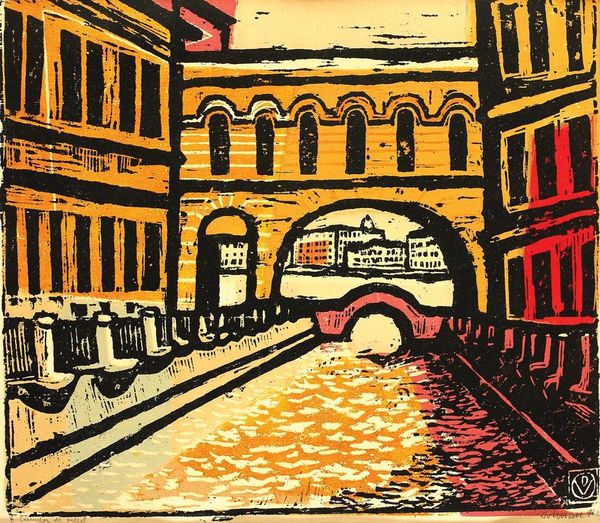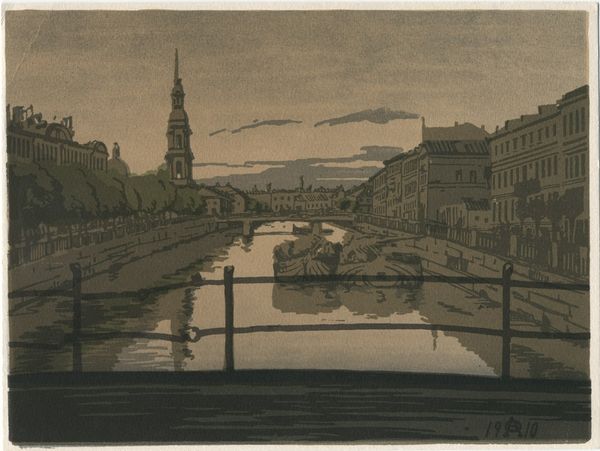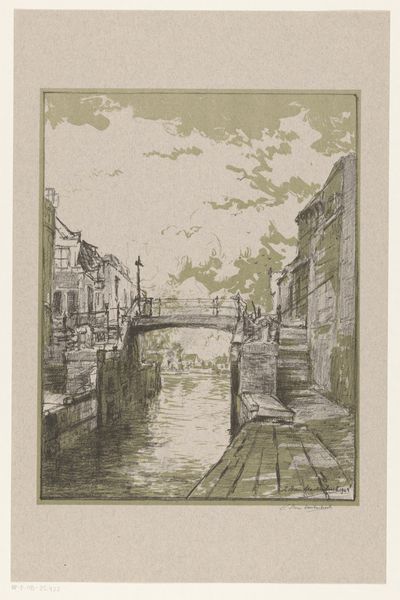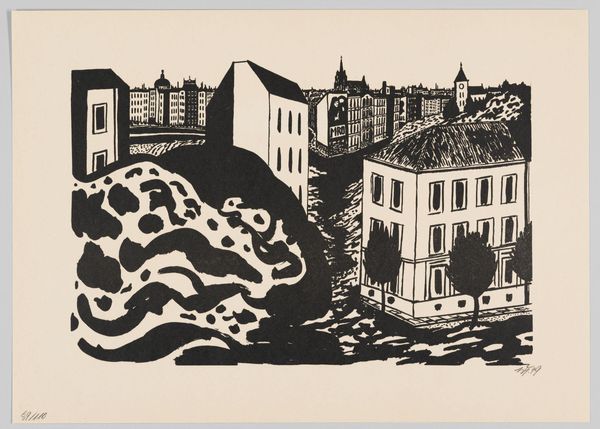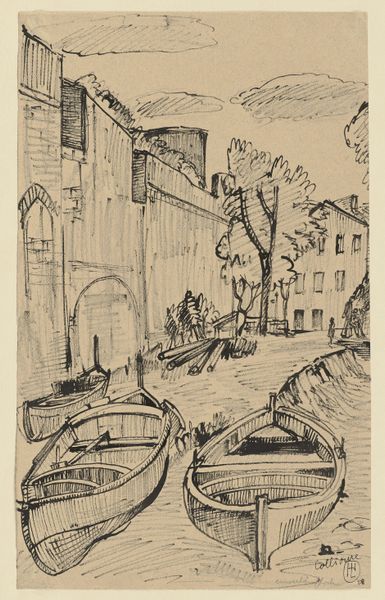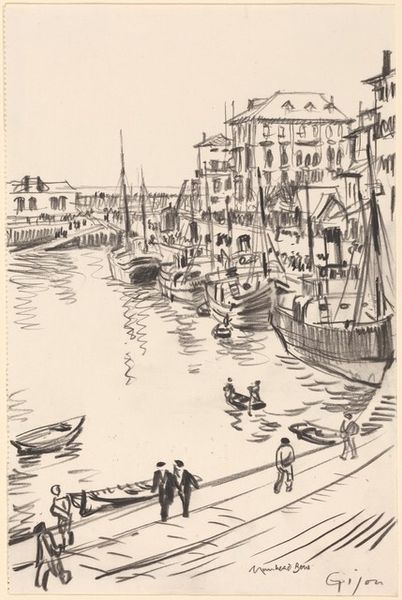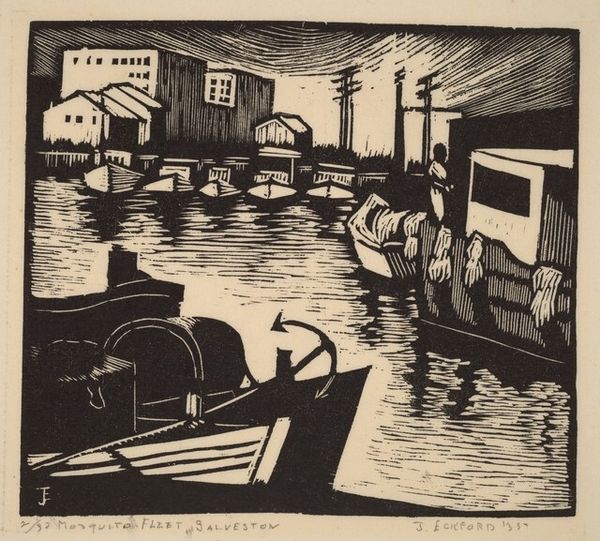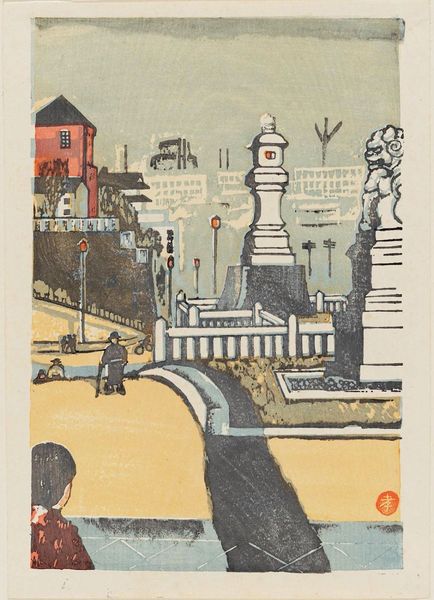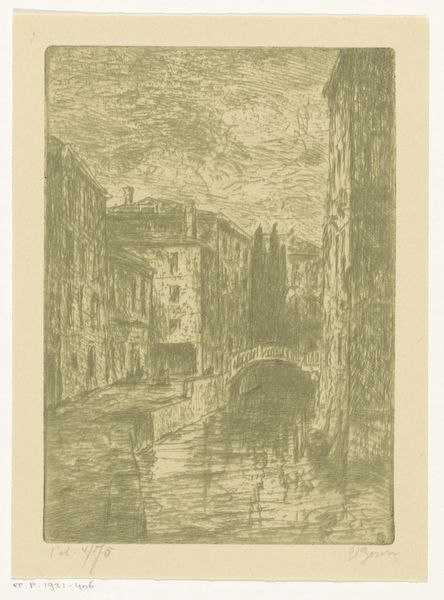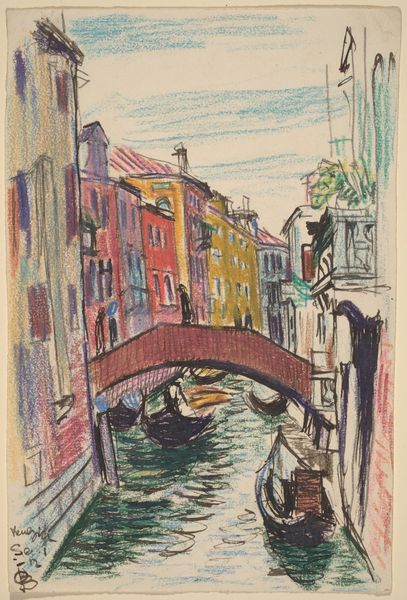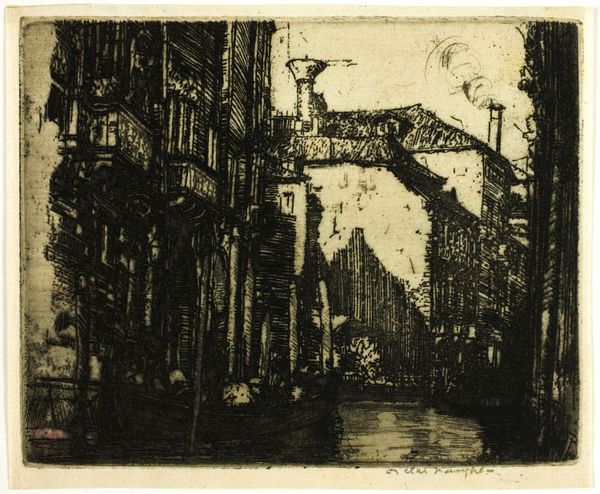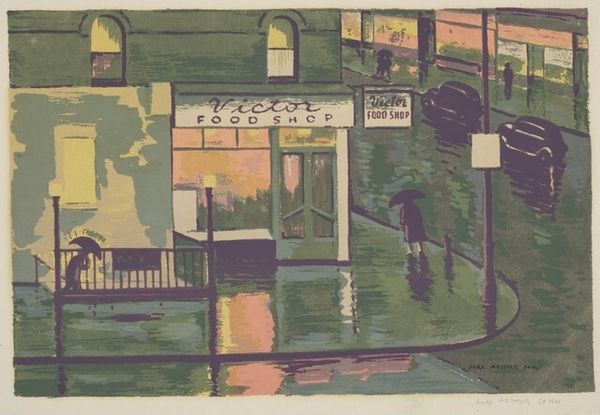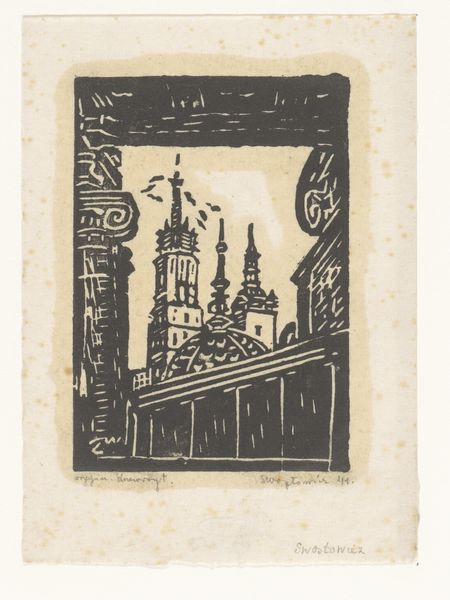
Dimensions: height 200 mm, width 263 mm, height 294 mm, width 360 mm
Copyright: Rijks Museum: Open Domain
Curator: What strikes me immediately is the mood. There's a sense of quietude, a kind of muted harmony despite the urban scene. Editor: Yes, it does have a calming effect. We are looking at "Sukiya Bridge", a woodblock print created in 1945 by Unichi Hiratsuka. It's currently held at the Rijksmuseum. For a scene of a bustling city, it feels incredibly still, even contemplative. But let's consider that 1945 was a pivotal year – what social and political influences do you think were at play during the time of its creation? Curator: That’s precisely what makes it compelling. Bridges, in art, are frequently potent symbols; connecting one place with another, implying passage or change. This piece seems to subvert that somewhat. There's this quietness, this feeling of stillness that resonates powerfully against the backdrop of post-war reality. I can't help but consider the bridge, this architectural marvel that signifies continuity and connection, as reflecting an urge for a return to equilibrium. There’s almost a melancholic air. Editor: Exactly. The city reflected here also suggests much about post-war society. Although this isn't a traditional Ukiyo-e print due to the artist's influence from other artistic forms, like western art movements, Hiratsuka uses this lens to represent Japan's changing urban landscape, while the details reflect socio-economic issues, alluding to the lives of the working class. Note, for example, how his chosen perspectives and colors play into that theme. Curator: The choice of limited color palette, almost monochromatic save for the golden washes, gives it this slightly subdued effect that contributes to the emotional tone. As for the shapes, one notices an almost geometric regularity of architectural details, as well as in how the water ripples – which brings about feelings of stability but also limitation. This feels like something deeper than merely aesthetic preferences. What cultural memories is Hiratsuka evoking here? Editor: That leads into a critical reflection about representation itself. Which perspectives does Hiratsuka consciously emphasize and how does this shape our reading of the cultural identity he projects? Whose stories and realities are deemed visible within this serene urban landscape, and, inevitably, whose stories remain out of sight? By focusing on the geometric while including organic shapes in smaller but vital proportions, such as the outline of trees along the buildings, it could even hint at what we may refer to as "Japanese Identity" from a post-war standpoint, one marked with tradition but looking toward the future. Curator: The piece, through its calm visual vocabulary, urges viewers to reflect on that fragile moment, both in terms of individual and cultural identity. What a fascinating window into a specific, culturally loaded moment in history. Editor: Precisely, and analyzing art in its own social and historical context is indispensable to gaining that very comprehension. What seems like a charming landscape harbors layers of nuanced narratives and societal weight.
Comments
No comments
Be the first to comment and join the conversation on the ultimate creative platform.
